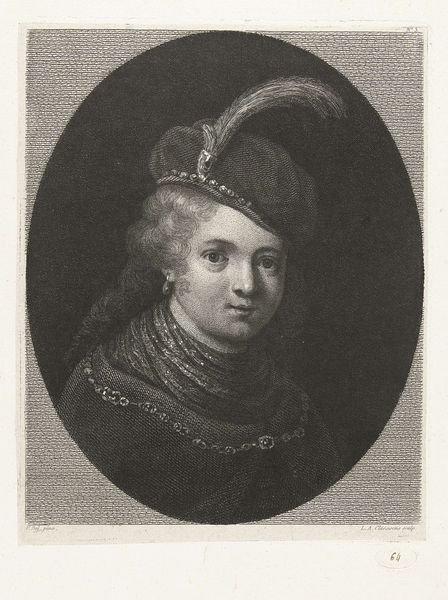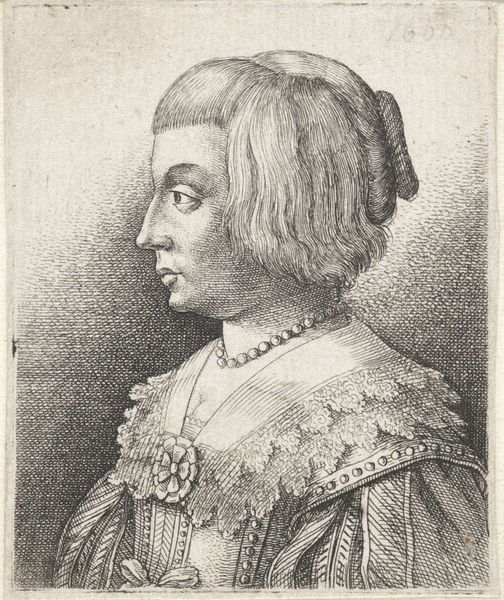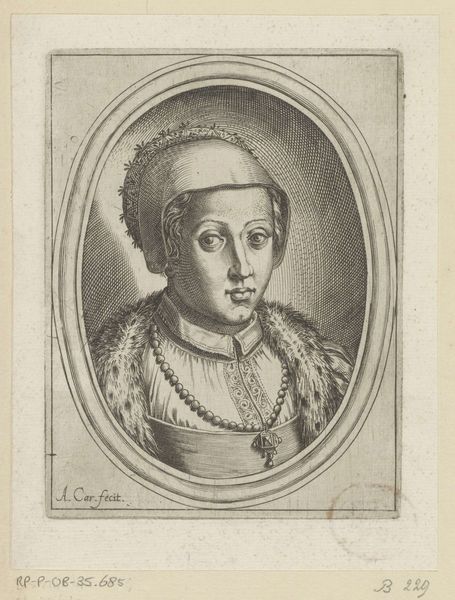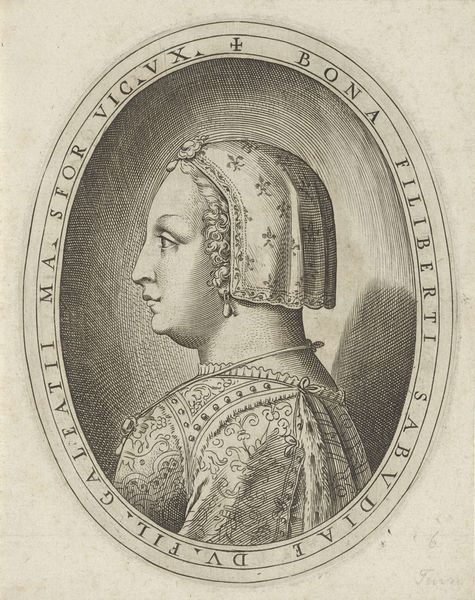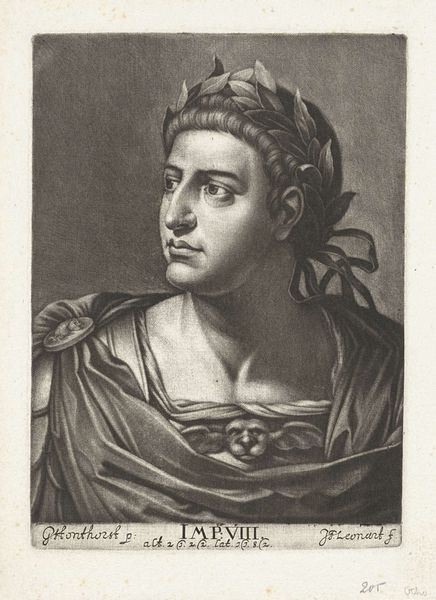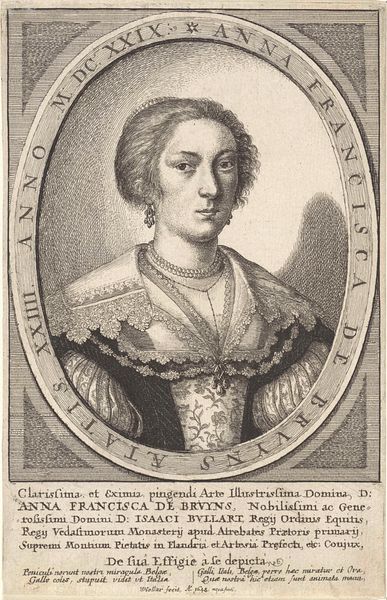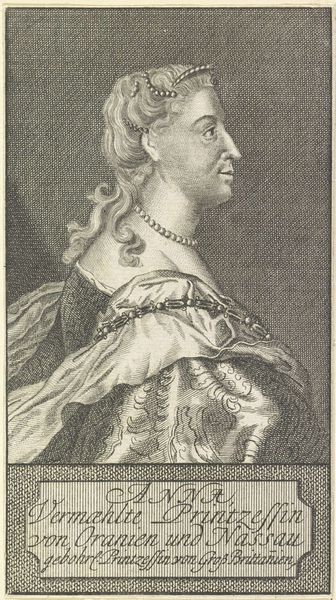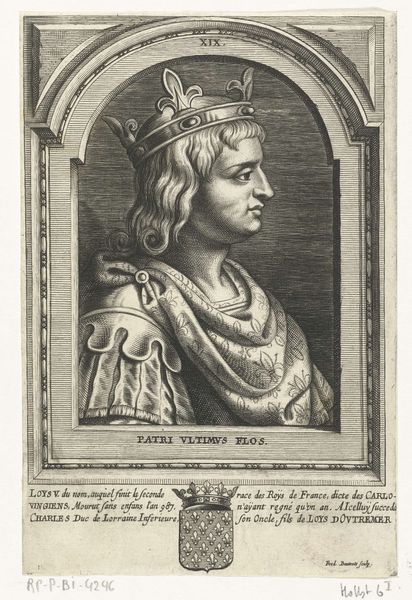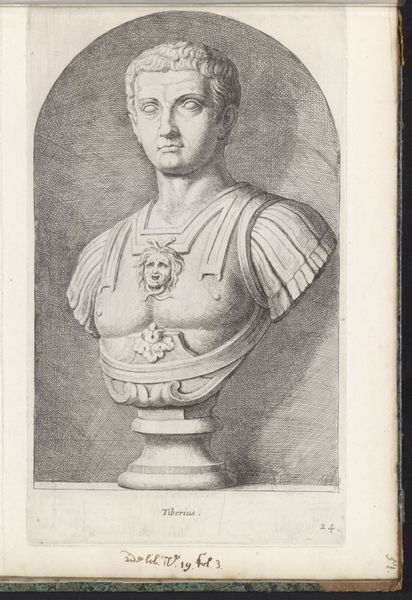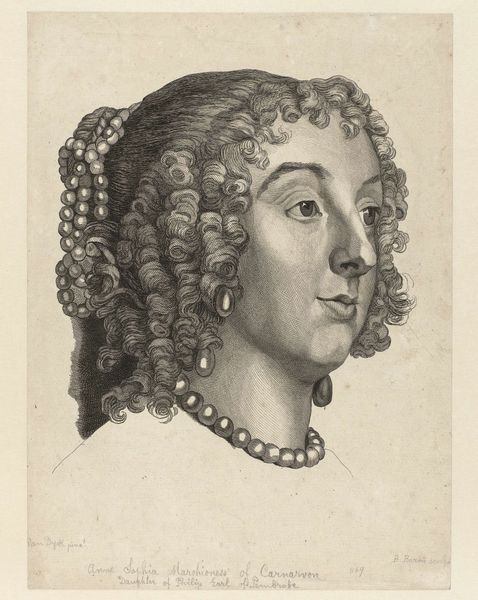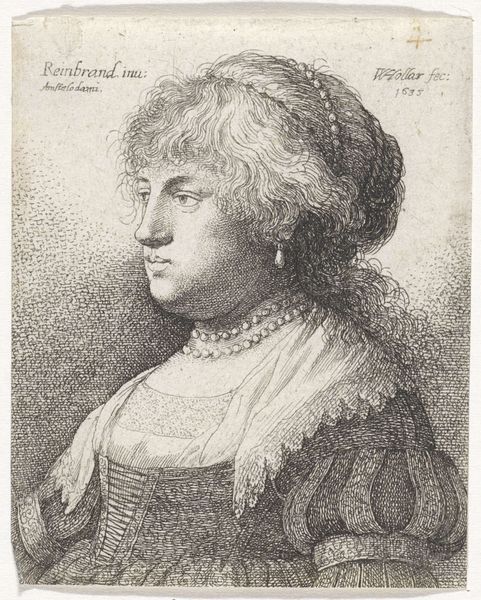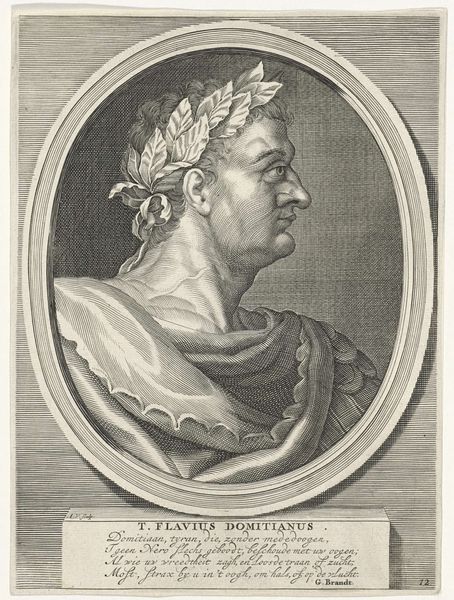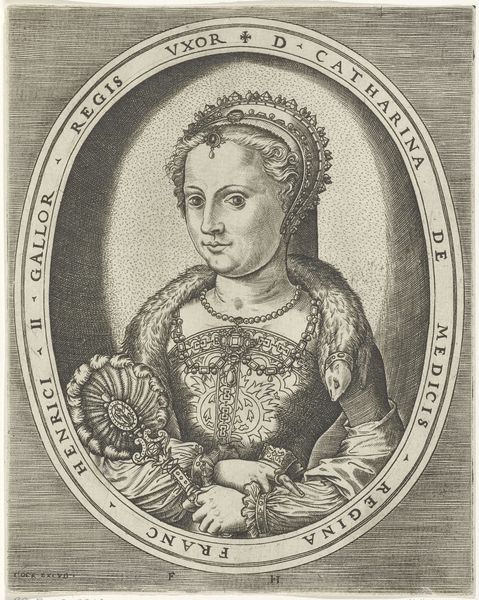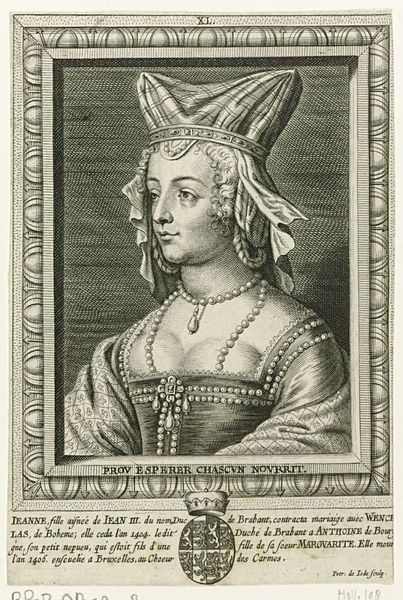
print, engraving
#
portrait
#
baroque
# print
#
old engraving style
#
portrait reference
#
engraving
Dimensions: height 76 mm, width 51 mm
Copyright: Rijks Museum: Open Domain
Curator: Before us is “Portret van een vrouw met haarband,” or “Portrait of a Woman with Hairband,” created in 1648 by Wenceslaus Hollar. It’s an engraving. Editor: There's a certain solemnity in her profile. The sharp lines of the engraving give her an almost regal, if austere, presence. Curator: Hollar was known for his meticulous technique. Think about the painstaking process of engraving, carving into the copperplate, applying ink, and pressing the image onto paper. This reproductive technique made images like these accessible to a wider public, influencing tastes and fashions. Editor: Absolutely. The medium dictates the message, in this case. That starkness of line emphasizes details like the elaborate lace trim, the pearl jewelry. Were such engravings marketed to a specific social class? Curator: Very likely, yes. Portraits circulated within social networks, reaffirming status and solidifying alliances. Prints like these made the aristocratic image far more widely available and distributed beyond the circles of elite portraiture. We see here this tension between aristocratic display and a democratizing technology. Editor: It makes me think about the craft itself. This wasn't just replicating an image; it was skilled labor. Who were Hollar's patrons, and what kind of workshops would have supported this level of production? Was he self-employed, or part of a larger studio system? Curator: Hollar worked for various patrons, including the English royal family for a time. The dynamics of the market played a critical role, dictating the types of subjects he engraved and even the level of detail he invested in each piece, his production determined by demands of commercial artistic enterprises and his employers' requests. Editor: Knowing about Hollar's situation changes my understanding. She appears serene but that serenity also is an embodiment of labor dynamics, which were perhaps often exploitative. Curator: I agree. It brings us face to face with questions of representation and the conditions that make that representation possible. Editor: Yes, I walk away with a much stronger feeling of its socio-economic dimensions than first met my eye.
Comments
No comments
Be the first to comment and join the conversation on the ultimate creative platform.
